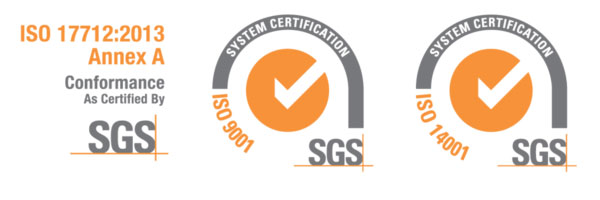



ISO (International Organization for Standardization) is the world’s largest developer of voluntary International Standards. A standard is a document that provides requirements, specifications, guidelines or characteristics that can be used consistently to ensure that materials, products, processes and services are fit for their purpose. ISO International Standards ensure that products and services are safe, reliable, and of good quality.
The ISO 17712 establishes “uniform procedures for the classification, acceptance, and withdrawal of mechanical freight container seals. It provides a single source of information on mechanical seals which are acceptable for securing freight containers in international commerce.”

The current ISO 17712 standard requires independent confirmation in three areas:
ISO 17712 defines three types of classes of seal strength or barrier capacity: “I” for Indicative; “S” for Security; and “H” for High Security. C-TPAT requires the use of “H” class seals. Suppliers must use independent third party test laboratories to validate a seal’s classification. Labs must be accredited according to ISO/IEC 17025 (General requirements for the competence of testing and calibration laboratories) to perform testing specific to ISO 17712.
Poor security-related practices can undercut the effectiveness of a high-quality security seal. ISO 17712’s Annex A defines over two dozen required practices, such as facility risk assessments and access controls to production and storage areas. Suppliers’ conformance with Annex A should also be demonstrated through an independent certification provider that is accredited to audit compliance with the ISO standards.
Security Seal manufacturers must be able to demonstrate to, and obtain certification from, an accredited auditor from an independent third party organization that their high security seals have built-in tamper evidence features. If an independent third party organization accredited to ISO 17020 verifies conformity, it will provide the manufacturer with a certificate of compliance that documents that the seals submitted for review do reflect tell-tale evidence of tampering generated by attempts to defeat a correctly closed and affixed seal.
May 15, 2014, the deadline date for all High Security Seals to be compliant with the new requirements of ISO17712:2013 – the international standard for mechanical seals. For seals to be compliant they must be categorized and marked “H” as High Security Seals when undergoing mechanical testing by an independent ISO 17025 accredited laboratory (Clause 5) and the manufacturer must be certified to both ISO9001 and ISO17712: Annex A.
The new requirement for High Security Seals is that they must also be compliant with Clause 6: Evidence of Tampering. Clause 6 requires the manufacturer to have a documented and audited process and test specification in place in its quality manual for all High Security Seals in its product range. Clause 6 is a valuable addition to the seal standard emphasizing the importance of continuous improvement of tamper resistance and tamper indicating features on security seals.
Want to find out more about the Seals Industry?
Learn More:
Check out our other Knowledge center pages for more information on the ins and outs of the security seal and tamper evident product market.